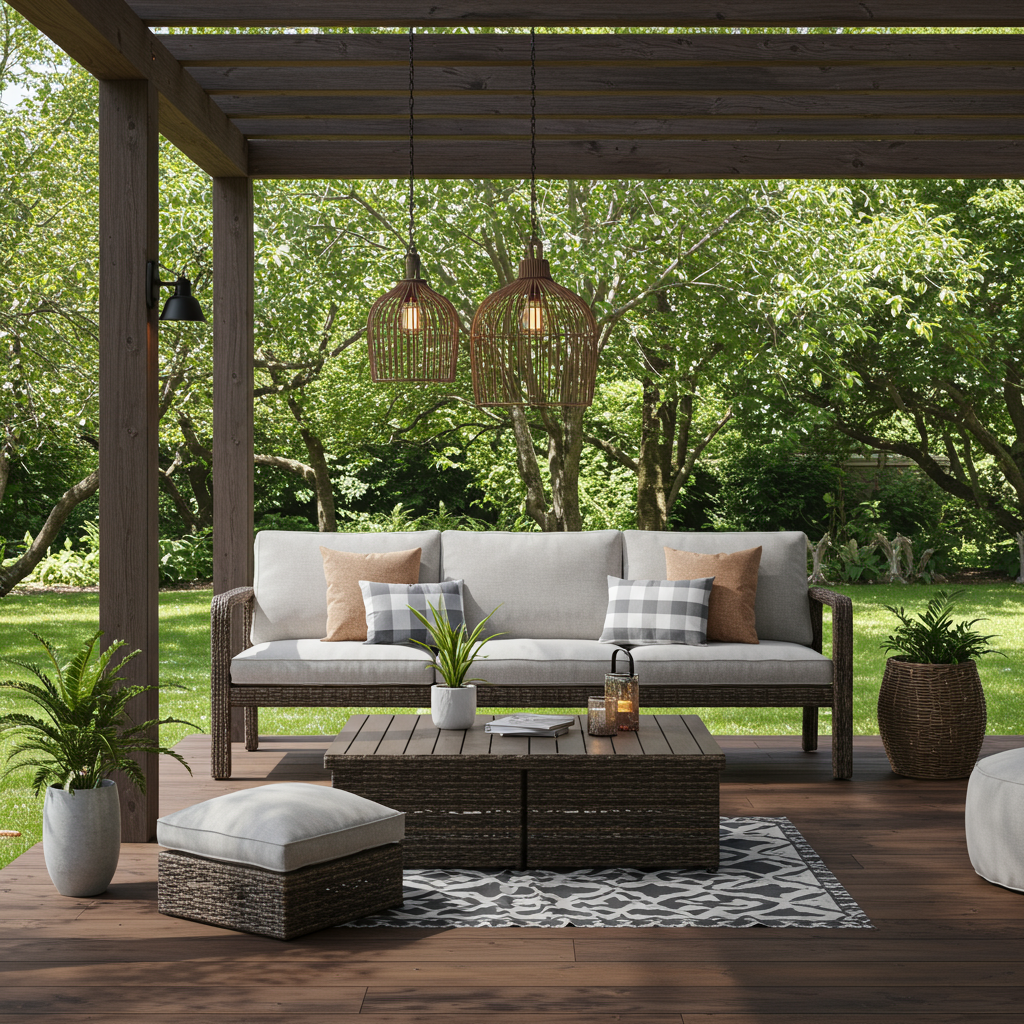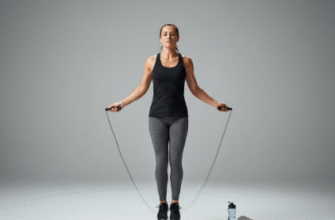There’s something undeniably magical about having your own little pocket of peace right outside your door. Imagine stepping out, coffee in hand, to a space designed purely for relaxation, a place where you can shrug off the day’s stresses and simply be. Creating a cozy outdoor seating area isn’t about sprawling lawns or elaborate landscaping; it’s about carving out a personal sanctuary, no matter the size of your space. Whether you have a tiny balcony, a modest patio, or a corner of your garden, transforming it into an inviting retreat is achievable and incredibly rewarding. It’s about connecting with nature, even in a small way, and designing a spot that feels like an extension of your home – comfortable, welcoming, and uniquely yours.
Finding Your Perfect Outdoor Nook
The first step is scouting the location. Where does the sun fall throughout the day? Do you crave morning sunshine or prefer the cooler shade of the afternoon? Walk around your available outdoor space at different times. Notice where the light is best, where you might feel most sheltered from wind or nosy neighbours.
Privacy is often key to feeling truly relaxed. Can you use existing structures like walls or fences? Or might you need to create privacy using plants or screens? Consider proximity to the house too. A spot right off the kitchen or living room is convenient for carrying out drinks and snacks, making it more likely you’ll use it frequently. Don’t discount less obvious spots – a side yard, a space under a large tree, or even a front porch can become wonderfully cozy havens with a little imagination.
Laying the Groundwork
Once you’ve picked your spot, think about the ground beneath your feet. What you have already might work perfectly fine – a well-kept patch of grass can feel lovely and natural. However, defining the area with specific flooring can enhance the sense of a designated ‘room’.
Patios, whether made of concrete slabs, pavers, or natural stone, offer a stable and durable surface. They define the seating zone clearly and are relatively easy to maintain. Decks, usually made of wood or composite materials, provide a raised platform that can feel distinct from the rest of the yard. They add warmth and are great for uneven ground. If you’re looking for a more budget-friendly or rustic option, consider gravel or wood chips. They drain well and provide a satisfying crunch underfoot, defining the space without the permanence of concrete or decking. An outdoor rug placed over any of these surfaces can instantly add colour, texture, and underfoot comfort, truly anchoring the seating arrangement.
Choosing Seating That Invites You to Linger
This is where the ‘cozy’ really comes into play. Your seating choices dictate the comfort level and the overall vibe of your outdoor escape. Think about how you want to use the space. Will you be dining alfresco, lounging with a book, chatting with friends, or simply enjoying a quiet moment alone? The function will guide your furniture selection.
Consider a mix of seating if space allows. A comfortable loveseat or a pair of deep-seated armchairs form a great foundation. Look for pieces with thick, comfortable cushions – and crucially, ensure the cushion fabric is designed for outdoor use. This means it should be resistant to fading, water, and mildew. Materials like solution-dyed acrylics are excellent choices.
Don’t shy away from unconventional options. A hanging chair or a porch swing adds a playful, relaxing element. Floor cushions or poufs offer flexible, casual seating, perfect for pulling up when extra guests arrive. A simple wooden bench tucked against a wall or under a window can be surprisingly inviting, especially when softened with a cushion or throw. Remember to consider the scale of your space. Oversized furniture will dwarf a small balcony, while tiny chairs might look lost on a large patio.
Proportion is essential for creating a balanced and comfortable feel.
Measure your chosen spot carefully before buying furniture. Consider not just the footprint of the seating but also the space needed to comfortably walk around it. Good flow is essential for a truly relaxing area, preventing it from feeling cramped or awkward to navigate.
Layering in the Comfort: Textiles and Textures
Furniture forms the bones, but textiles bring the soul to your cozy outdoor space. This is where you can inject personality, colour, and that all-important softness. Outdoor cushions are a must, but don’t stop there. Drape lightweight throws over the backs of chairs or keep a basket of thicker blankets handy for cooler evenings. Even on warm days, a throw adds visual softness and texture.
An outdoor rug, as mentioned earlier, is transformative. It defines the seating area, adds colour and pattern, and feels much nicer underfoot than bare concrete or wood. Look for rugs made from polypropylene or other synthetic materials designed to withstand sun, rain, and foot traffic. They are surprisingly durable and easy to clean, often just needing a quick hose-down.
Think about texture in your furniture materials too. The smoothness of metal, the warmth of wood, the intricate weave of wicker – mixing these elements adds depth and interest to the space. Avoid making everything match perfectly; a curated mix often feels more personal and inviting.
Setting the Mood: Lighting, Plants, and Personal Touches
Ambiance is crucial for transforming a simple seating area into a magical retreat, especially as dusk settles. Outdoor lighting plays a huge role here.
Illumination Magic
String lights are incredibly popular for a reason – they instantly create a festive, enchanting atmosphere. Drape them overhead, along a fence, or through the branches of a nearby tree. Solar-powered stake lights are perfect for illuminating pathways or highlighting planters. Lanterns, whether housing real candles (used safely!) or battery-operated LED versions, add a charming, flickering glow. Place them on tables, steps, or hang them from hooks. Consider uplighting for dramatic effect, directing light towards interesting plants or architectural features. The goal is soft, layered lighting rather than harsh, overhead glare.
Warm-toned bulbs generally create a cozier feel than cool white ones.
The Green Embrace
Plants are non-negotiable for connecting your seating area to nature. Even on a small balcony, containers filled with greenery make a world of difference. Use a mix of heights and textures. Taller plants like bamboo or ornamental grasses can create natural screens for privacy. Trailing plants spilling over the edges of pots or hanging baskets soften lines. Include flowering plants for pops of colour and, importantly, fragrant varieties. Scents like jasmine, gardenia, or lavender drifting on the breeze enhance the sensory experience immeasurably. Grouping pots of varying sizes creates a lush, layered look. If you have garden beds nearby, plant strategically so your seating area feels nestled within the greenery.
Making It Yours
Finally, infuse the space with your personality. Add small side tables for convenience – essential for holding drinks, books, or snacks. Include decorative objects that bring you joy, perhaps a small sculpture, interesting stones, or weatherproof art. Wind chimes or a small, self-contained water feature can add gentle, soothing sounds. Think about the little details that make it feel less like a generic patio set and more like *your* personal haven. Maybe it’s a specific colour palette reflected in the cushions and planters, or a collection of lanterns you’ve gathered over time. These personal touches complete the picture.
Adapting to the Elements
To maximise the enjoyment of your outdoor space, consider how you’ll deal with different weather conditions. Shade is vital on hot, sunny days. If you don’t have natural shade from trees or buildings, consider adding an umbrella – cantilever styles offer flexibility without a central pole getting in the way. A retractable awning provides shade on demand. For a more permanent solution, a pergola can be beautiful, especially when covered with climbing plants, offering dappled sunlight.
For cooler evenings, a portable fire pit (check local regulations first!) or a patio heater can extend the usability of your space well into the shoulder seasons. Having easily accessible storage for cushions and throws is also practical. A deck box or indoor storage nearby protects textiles from heavy rain or harsh sun when not in use, prolonging their life and keeping them clean and ready for your next relaxation session.
Keeping Your Haven Inviting
A little regular upkeep ensures your cozy corner remains a pleasant place to be. Sweep patios or decks periodically to remove leaves and debris. Wipe down furniture occasionally, following the manufacturer’s care instructions. Deadhead flowers to encourage more blooms and keep plants looking tidy. Fluff cushions and fold throws after use. It doesn’t need to be arduous – just a few minutes here and there will maintain the welcoming atmosphere you’ve worked hard to create. Treat it like any other room in your house that benefits from a quick tidy-up.
Creating your own cozy outdoor seating area is an investment in your well-being. It’s about intentionally designing a space that encourages you to pause, breathe deeply, and appreciate the simple pleasure of being outdoors. It doesn’t require a huge budget or vast amounts of space, just a little thought, creativity, and the desire to craft your personal slice of tranquility. So look at that neglected corner, that empty balcony, that patch of patio, and start dreaming. Your perfect outdoor escape is waiting to be brought to life.









